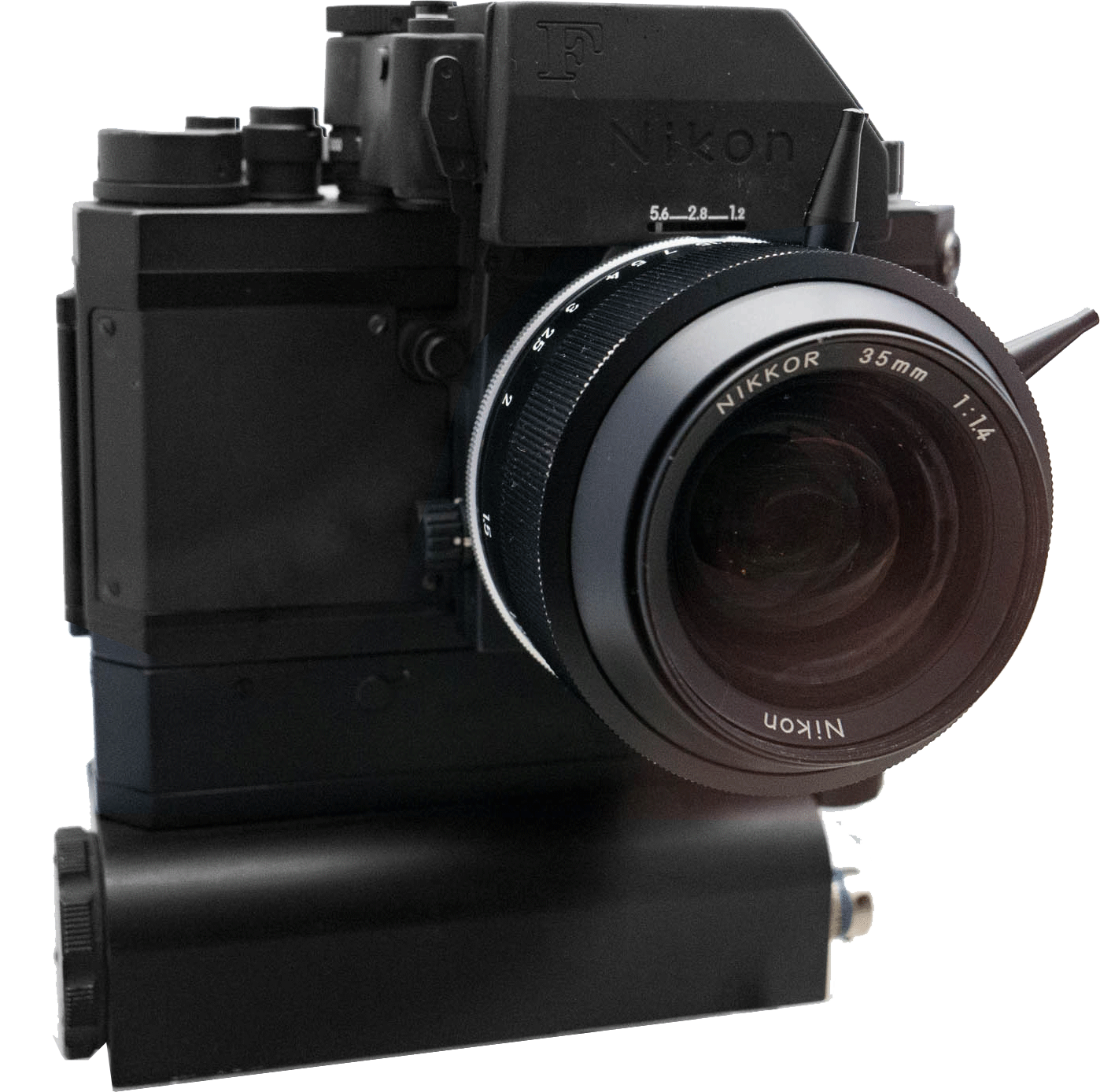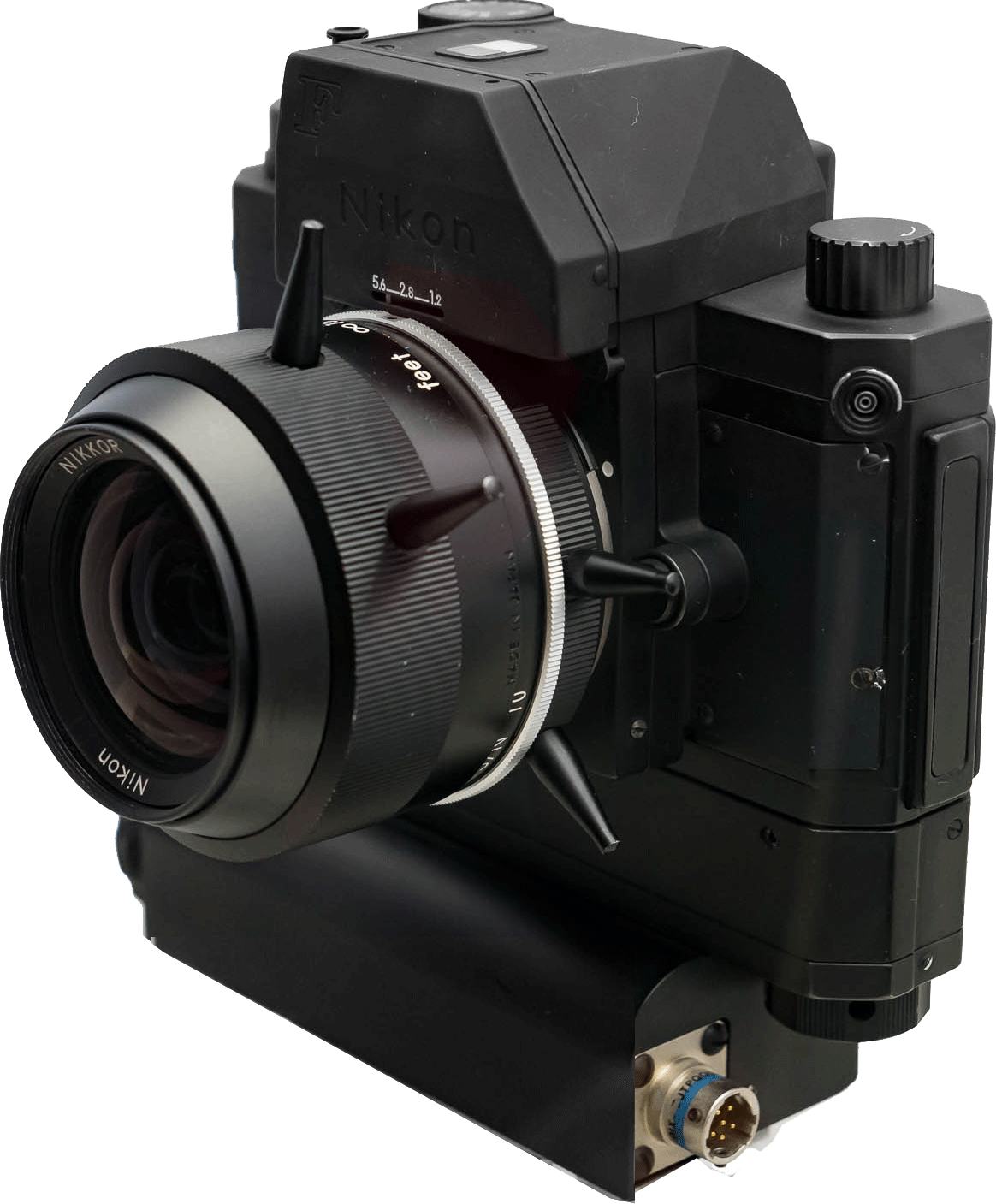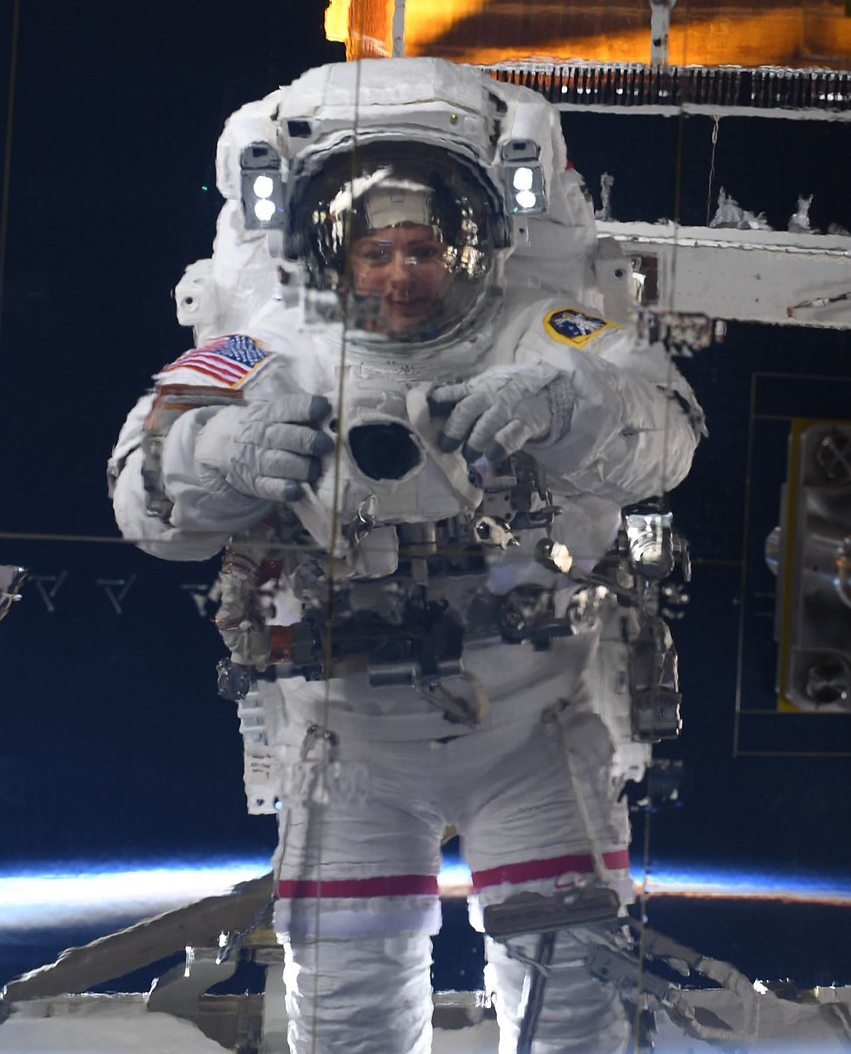|
Nikon SLR-type digital cameras |
|
|
Nikon Photomic FTn special NASA Appolo 15, 1975 When the U.S. National Aeronautics and Space Administration (NASA) wanted a more portable
camera for its space missions, it went to Nikon.
The challenges of producing a camera that worked safely and conveniently for astronauts in space are many, including having controls
that are large enough to operate for astronauts wearing bulky gloves. The camera must also be able to function flawlessly in zero gravity
situations, in the vacuum of space, and while being roasted by the intensely hot rays of the Sun in outer space.
|
|
|
Nikon F Nasa with "horns" |
As mentioned by Barney Britton in DPreview, Nikon has a long history of making cameras for use in outer space. A small exhibition at 2018's CP+ show in Yokohama showcases some of the company's most famous models. |
|
Nikon F Nasa without viewfinder |
This is another heavily modified F, without a viewfinder. This camera is similar to motor drive-equipped models supplied to NASA for the 1973 Skylab missions. The fatter, easier to grip controls are obvious in this view.(1) |
|
Nikon F3 Nasa
"small" Nikon F3 Nasa |
"big" Nikon F3 Nasa |
Nikon F3, F4 and F5 NASA After the Nikon issued from the Photomic FTn, some others
special cameras were developed for the NASA
by Nikon from the basis of F3 and F4 bodies.
The Nikon F3 was developed for a large part from the NASA specifications. |
Space walking with a Nikon F3. |
The Nikon F was a relatively old camera by the time it was used on the Skylab missions, but NASA didn't supply any modified F2 bodies - instead jumping straight to the F3 in the early 80s.
This is a 'small' F3, with a modified motordrive and high-magnification finder, supplied to astronauts on early space shuttle missions. Compared to the earlier (and hugely costly) F/FTN conversions, the F3 cameras that Nikon supplied to NASA were much more similar to the standard models available for sale to the general public.(1)
This is the 'big' F3, also used on space shuttle missions in the 1980s. The bulk film magazine could hold enough film for 250 images before it needed to be reloaded. On earth, this looks like it would be one heavy camera to carry around, but of course that's less of an issue in zero gravity.(1)
|
|
|
In 1992, the standard Nikon F4 film body was converted to digital by placing a one megapixel monochrome CCD at the film plane. The sensor was a Loral CCD 1024x1024 pixel array with an active area of 15mm x 15mm. |
Nikon digital SLR cameras for NASA
|
New-York viewed from space |
 Atlantis space shuttle |
 Nikon D4 DSLR at International Space Station |
NASA ordered its first digital cameras in 2008 for use in space:
- a set of six Nikon D2XS DSLRs, followed by Nikon D3, 11 D3S in 2009, D3x cameras and
flashes used until
final flight of space shuttle Atlantis the 21th of July 2011.
- 48 Nikon D4 DSLRs from 2013 to 2016 and 53 Nikon SLR D5 from November 2017.
NASA is reusing Nikon lenses and accessories previously launch with the Nikon D4 and D2Xs cameras and
planning to keep the D5 cameras in circulation for 12-18 months.
|
Nikon D4 Nasa with EVA cover |
Today, Nikon D4 and D5 use a special EVA cover - a thermal blanket, designed to protect the camera from the extreme temperature variations experienced during spacewalks. Made from mylar, Kevlar, aluminum and no doubt plenty of other advanced materials, each EVA cover reportedly costs around $20,000. |
selfie of NASA astronaut Jessica Meir with a Nikon D5 |
Return to the moon Artemis III
|
Nikon Z9 in review for Artemis III |
Test of the Artemis camera in Lanzarotte |
debriefing on the design of the Artemis camera |
After a test phase in October 2023, the Nikon Z9 and the Nikkor Z 40mm f/2 lens were selected in March 2024 by the NASA for the next American lunar mission "Artemis III".
For the return of astronauts to the moon and to develop the Portable Universal Lunar Camera (HULC), European astronauts and scientists are lending a helping hand to NASA's Artemis imagery team. The tests took place in the lunar landscapes of Lanzarote, Spain.
"The new lunar camera is built from professional off-the-shelf cameras with great sensitivity to light and state-of-the-art lenses. To prepare it for space, the NASA team made several modifications, including adding a blanket for dust and thermal protection - temperatures range from minus 200 to 120 degrees Celsius on the Moon - as well as a new set of ergonomic buttons for astronauts wearing gloves in bulky spacesuits."
















